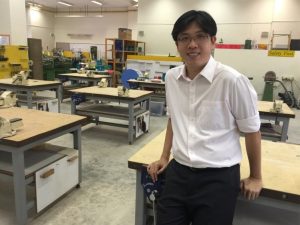Why Singapore’s English Teachers Should Embrace Singlish, Not Fight It
Is it time for Singaporean educators to embrace Singlish as a legitimate learning tool? What the Research […]
Read More
While it is not a new concept, makerspace has been gaining traction in Singapore schools for the numerous benefits it brings about to students’ learning. Traditional learning tends to be one-way in that students are told what to learn. The makerspace environment, however, values the spirit of collaboration and involves three main elements: tools, people and mindset. Two teacher-advocates of makerspace share with us more about its benefits.

Mr Johnny Wee, Subject Head (Design Education) at Ping Yi Secondary School
Makerspaces provide an outlet for students to experiment and explore creatively, beyond the boundaries of timetables and textbooks. Other than allowing students to pursue their own creative interests and ideas, makerspace also provides opportunities for students to co-construct (as an individual or in a team) their understanding of subjects in different ways that can be enriching to both teachers and students. For example, some students can demonstrate the principles of physics through cardboard drag-cars with different wheel sizes and body shapes of their own design, while others can choose to express the same knowledge through the aerobatic movements of a DIY radio-controlled aircraft. Makerspaces allow students to play different roles: the visionary with his flights of fantasy, the scientist with his intellectual curiosity, and the designer with purpose and passion.
What distinguishes a makerspace from a regular school workshop is the unique culture of experimentation and learning from mistakes. Students should feel encouraged to pursue their own interests and ideas, and teachers should be mindful of building up an atmosphere of intellectual curiosity and sharing. Do not worry about having to “know” everything under the sun as a makerspace teacher, and allow students to explore and learn together. In short, rather than worry about making “failsafe” makerspaces, aim to create an environment that is “safe-to-fail”!

Mr Lin Lixun runs the school’s innovation program at Nanyang Primary School
A makerspace serves to enhance the teaching and learning experience. It provides the resources, tools and physical space that may not be possible and/or available in a conventional classroom. This is particularly so for primary schools which, unlike secondary schools, do not have a Design and Technology workshop. Some of the specialized equipment includes cutting equipment, electronic drills, glue guns, workbenches with clamps, etc. This allows teachers to enrich the Maker experience and provide students with the opportunity for richer and more authentic prototyping (which I do for students’ prototyping solutions for problems identified). The physical configuration of a makerspace may also differ from a conventional classroom, providing spaces that cater to a variety of Maker activities.
All in all, makerspaces can support and enhance teaching and learning if utilised in a purposeful manner. This requires thoughtful planning in designing the curriculum for the purposeful use of the makerspaces. During our initial phase of implementation, we created and bought some resources without deliberation on creating the curriculum to utilise the resources. This led to challenges faced such as under-utilised resources. Therefore, makerspaces can support learning meaningfully only if driven by thoughtful curriculum design and planning.